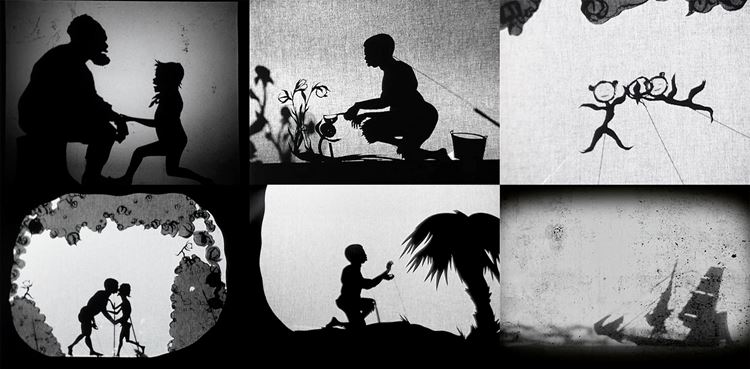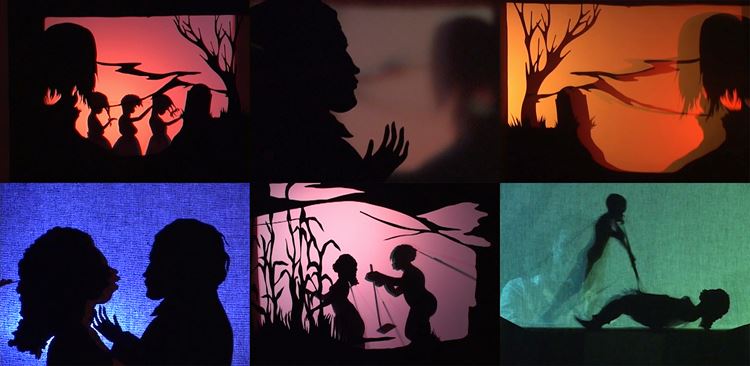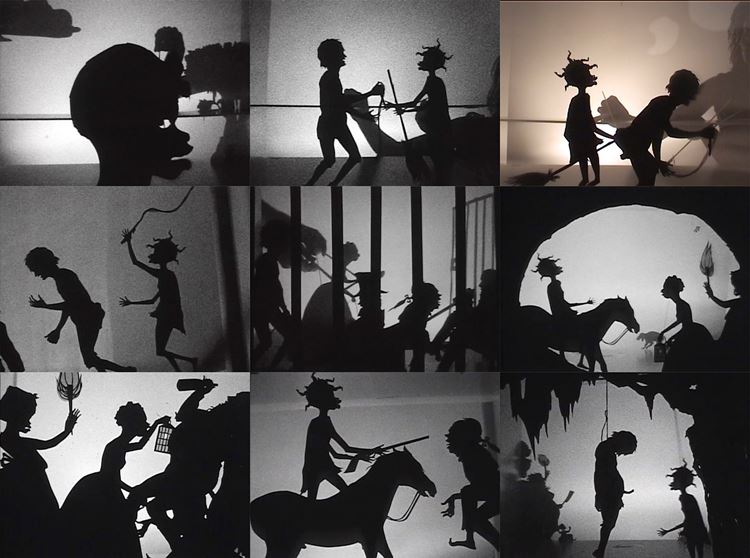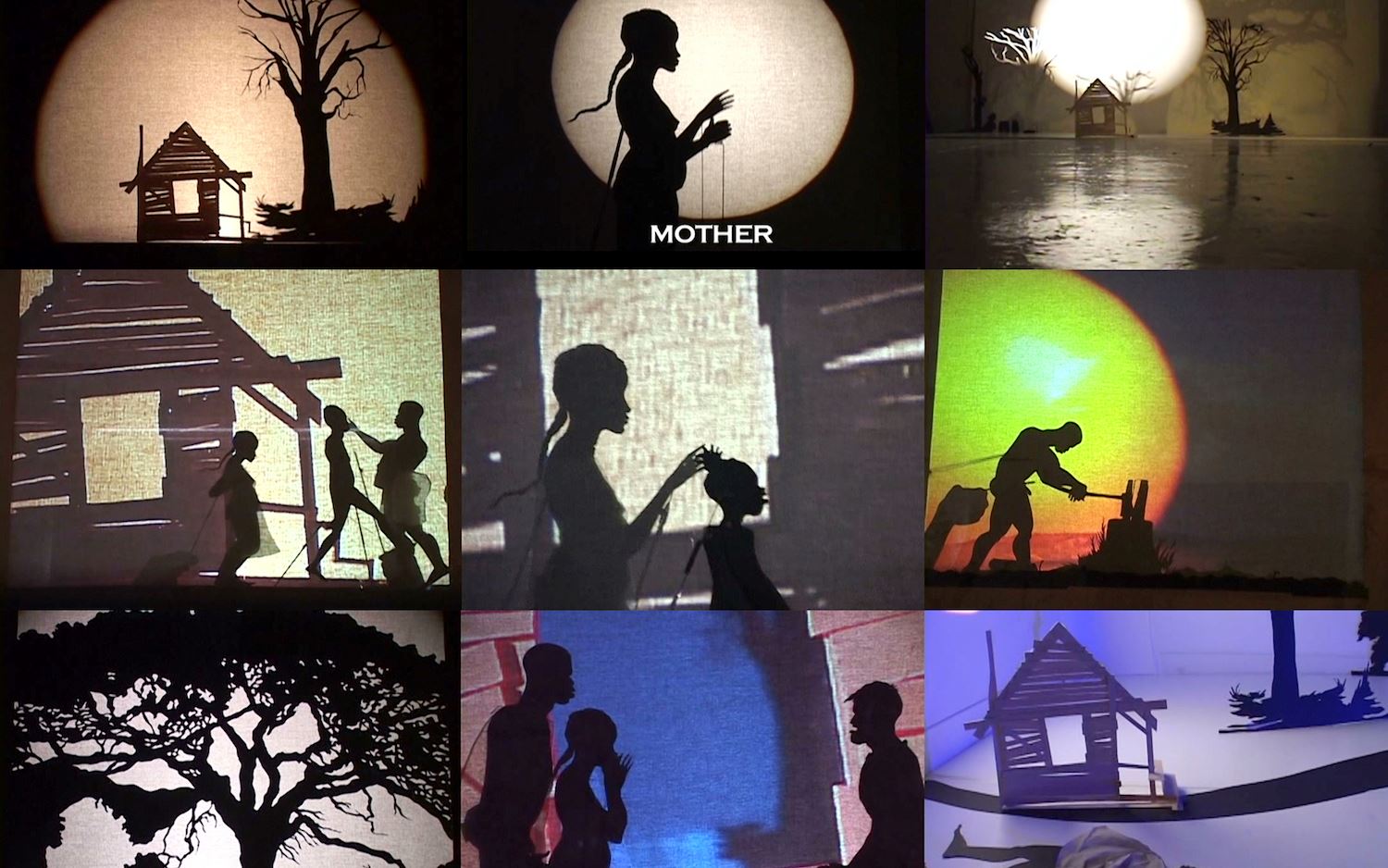ART CITIES:London-Kara Walker
 Kara Walker’s instantly recognizable cut-paper silhouettes are visually striking and charged with racial, sexual, and historical tension, commenting on slavery, the Black American experience, and women’s place in society. The characters that populate her work are almost cartoonish, the reduction of human beings to pure physiognomy and exaggerated characteristics indicative of persisting racial and gender stereotypes.
Kara Walker’s instantly recognizable cut-paper silhouettes are visually striking and charged with racial, sexual, and historical tension, commenting on slavery, the Black American experience, and women’s place in society. The characters that populate her work are almost cartoonish, the reduction of human beings to pure physiognomy and exaggerated characteristics indicative of persisting racial and gender stereotypes.
By Efi Michalarou
Photo: Sprüth Magers Gallery Archive
Film has long played a crucial role in Kara Walker’s groundbreaking artistic practice. Eight of Walker’s films highlight her diverse approach to filmmaking, signature use of silhouettes, and insightful handling of space, sound and time to expose profound and enduring historical traumas and narratives. “From Black and White to Living Color: The Collected Motion Pictures and Accompanying Documents of Kara E. Walker, Artist” is a small retrospective of Kara Walker’s work on film. The concept of the exhibition has been formulated for many years by Hilton Als, who himself has known Walker for several years. The exhibition moves from the earliest film, from 2004, entitled “Testimony: Narrative of a Negress Burdened by Good Intentions”, to later works such as “Fall Frum Grace, Miss Pipi’s Blue Tale” (2011). The work of Kara Walker consists of a complex layering of internal and external struggles of the emotional, physical, personal, sexual and racial found throughout literature, culture and history. Throughout it all, the single aspect of power unites the themes in her creations. Perhaps best known for her cut-paper silhouettes, she first started exploring this medium around 1993 while a graduate student at Rhode Island School of Design. Silhouettes were marveled at as the three-dimensional world could be reduced so convincingly into a two-dimensional form. However, Walker’s exaggerated figures are disorienting. “Testimony: Narrative of a Negress Burdened by Good Intentions”, the artist’s first film is a silent black and white puppet animation that recounts the story of the lynching of a plantation master by his slave lover. Seen in this narration are her most recognized characters, the Auntie, the master, the master’s son and the Negress mistress. The story is set on a cotton plantation that recount how the men, with their physical longings, allow their bodies to find fulfillment in the slave women. When the women refuse to fall immediately back into the caste system, they murder their lovers (masters). “Fall Frum Grace, Miss Pipi’s Blue Tale” (2011), highlights the artist’s compelling approach to difficult but crucially relevant subject matter, but also divided both the art critics and the public. The video is a shadow puppet narrative, which follows the travails of the heroine, Miss Pipi, intercut with shadow puppet “abstracts” of a surreal and violent nature. Miss Pipi, a “Southern Belle* in the pre-civil war American Deep South, has a sexual encounter with a black man, presumably a slave. When their tryst is uncovered, he is eventually beaten, castrated, and brutally killed by her jealous white lover and a group of white men. The subtext of the video is the mythology surrounding white Southern womanhood, historically cited time and time again as an entity to be protected from sexuality, in particular from the presumed hyper-sexuality of black men. Although fiction, this was the excuse for the murder of countless black men and boys in Jim Crow America. Jim Crow was the name of the racial caste system which operated primarily, but not exclusively in Southern and border States, between 1877 and the mid-1960s. Jim Crow was more than a series of rigid anti-black laws. It was a way of life. The Jim Crow system was undergirded by the following beliefs or rationalizations: whites were superior to blacks in all important ways, including but not limited to intelligence, morality, and civilized behavior; sexual relations between blacks and whites would produce a mongrel race which would destroy America; treating blacks as equals would encourage interracial sexual unions; any activity which suggested social equality encouraged interracial sexual relations; if necessary, violence must be used to keep blacks at the bottom of the racial hierarchy. While Walker’s narrative moves forward linearly, it is interspersed with scenes that add a level of surreal abstraction: flowering trees scroll by, a man in a top hat dances to jovial music, a figure who is half-human, half bicycle wheels across the screen. In addition, the artist offers viewers glimpses of the puppeteers themselves, of which Walker is one. This periodically breaks the illusion of silhouettes, adding touches of humor and jolting us out of the artist’s uncanny reverie and into the present moment. The video’s soundtrack moves from Delta Blues to 70s groove music to ambient noise, adding yet another complex layer to Walker’s ambivalent blend of cultural and historical references. The exhibition also include an array of artefacts that shed light on Walker’s process as she conceives of and composes her films. Shot lists, handwritten notes, cut-and-pasted lines of text, sketches and puppets are interspersed with the artist’s moving images, deepening our understanding of her films and her expansive practice of unforgettable work across mediums.
* The term Southern Belle represents a young woman of the American Deep South’s upper socioeconomic class.
Info: Sprüth Magers, 7A Grafton Street, London, Duration: 4/10-21/12/19, Days & Hours: Tue-Sat 10:00-18:00, http://spruethmagers.com



